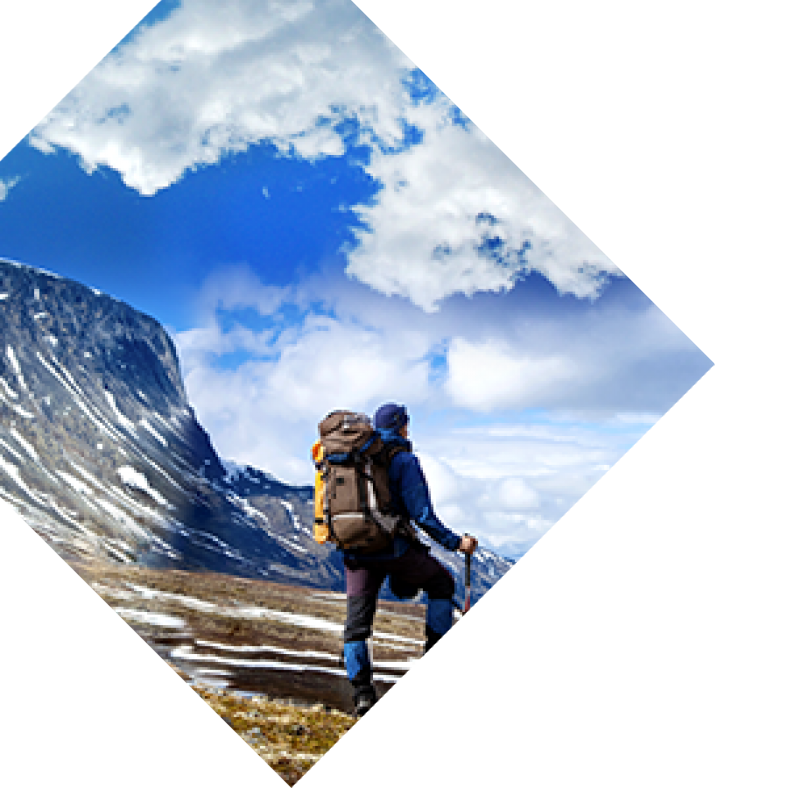Overwhelming. That’s how most describe their experience walking into a store trying to figure out how to choose hiking boots. That's because choosing a pair of hiking boots is one of the most complicated gear purchases you’ll make. That’s not said to talk you out of making a purchase, but to make you aware that you should never – we don’t say that lightly – feel pressured to rush the buying process. Yes, choosing the right boots is complicated, but it’s complicated for all the right reasons. The end goal in purchasing hiking boots is buying a pair that fits your specific outdoor needs (day hiking, mountaineering, backpacking, etc.) and finding the absolute best fit for your feet. We’re here to give you all the details about a step in the right direction. Ready to learn all there is to know about making a hiking boot purchase? Let’s get started.
Table of Contents:
- Why Hiking Boots
- Buying Criteria
- Types of Hiking Boots (by Activity)
- Components & Materials
- Hiking Boot Fit
- Post-Purchase Tips
- Where To Buy Hiking Boots
Why you need hiking boots
Do you really need hiking boots? Probably. Maybe you don’t specifically need hiking boots, but you should definitely consider purchasing boots or shoes that are designed for hiking. Tennis shoes don’t offer the same support or traction that a hiking boot or hiking shoe can offer. As GORE-TEX products fan Tyler Norris wrote in his blog, 5 Reasons I Stopped Hiking in Tennis Shoes, rolling your ankle on a trail is a lot different than rolling your ankle during any other activity. You can’t just hobble a short distance to your car. Hiking with more durable and protective footwear also allows you to enjoy the surroundings without looking at every step before you take it. I don’t know about you, but I prefer to look up and around at the beautiful views nature provides us rather than down at the trail while I’m exploring. Whether you need a heavy-duty hiking boot can depend on what trips and terrain you plan to tackle. Go to top
What to look for when choosing hiking boots:
- Comfort: How well does the product fit and is it providing ample joint support? Are the shoes warm enough? Should they be breathable? Are they lightweight enough to meet your taste?
- Stability: Do the shoes provide enough ankle support and will you feel balanced on the trail?
- Traction: Does the tread pattern and material match your intended terrain?
- Weight: Are the boots too heavy or too light for the season or duration of your hike?
- Water Resistance: How well will the hiking boots battle the elements? Will you be hiking in soggy socks or happy feet
- Durability: Can these boots stack up trail after trail, month after month or will they tap out come shoulder season?
Now that you have the basic criteria down, read on to learn more about the types of hiking boots available. Go to top
Hiking boot types (by activity)
The type of hiking boot you choose will depend on your next adventure. Whether that's day hiking, trail running, backpacking or mountaineering, you'll want a pair of hiking boots equipped with the technology to support you wherever the terrain takes you.
Hiking
What is hiking? Hiking is an outdoor activity where people walk in beautiful natural environments on pre-charted paths called hiking trails or in the wilderness. Hikes tend to be completed in less than a day, with hikers returning to permanent shelter at the end.
Hiking shoes
Hiking shoes are designed for endurance. They are created with fast, demanding terrain in mind and can support hikers with their packs. Look for hiking shoes made with GORE-TEX product technology for a durably waterproof, windproof, and highly breathable experience. Hiking Shoe Recommendation For Men 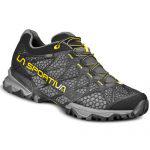 La Sportiva Primer GORE-TEX SURROUND® Shoe - “I can report that my feet remained dry and comfortable despite sweat soaking my T-shirt while carrying a 50-pound pack across the City of Rocks. The GORE-TEX footwear also kept moisture from penetrating during a light rain and when I stood in a shallow creek to test them.” Learn more about how the La Sportiva Primer GORE-TEX SURROUND® Shoe held up on Michael Lanza’s desert hike. Hiking Shoe Recommendation For Women
La Sportiva Primer GORE-TEX SURROUND® Shoe - “I can report that my feet remained dry and comfortable despite sweat soaking my T-shirt while carrying a 50-pound pack across the City of Rocks. The GORE-TEX footwear also kept moisture from penetrating during a light rain and when I stood in a shallow creek to test them.” Learn more about how the La Sportiva Primer GORE-TEX SURROUND® Shoe held up on Michael Lanza’s desert hike. Hiking Shoe Recommendation For Women 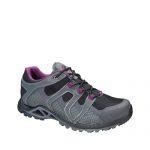 Mammut Comfort Low GTX® SURROUND® Shoe - “Lightweight and comfortable, the Mammut Comfort Low GTX® SURROUND® Shoe is perfect for summer adventures in Montana.” See more of what Dagmara Mach had to say about this hiking shoe. Go to top
Mammut Comfort Low GTX® SURROUND® Shoe - “Lightweight and comfortable, the Mammut Comfort Low GTX® SURROUND® Shoe is perfect for summer adventures in Montana.” See more of what Dagmara Mach had to say about this hiking shoe. Go to top
Hiking boots
The terms hiking boots and hiking shoes are sometimes used interchangeably. The difference here is hiking boots tend to have a higher cut, adding more protection for your ankle. Look for hiking boots that are lightweight and can support your intended activities. Hiking Boots For Men: 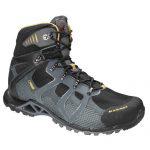 Mammut Comfort High GTX® SURROUND® Boot - “The mesh fabric in the uppers improved the boot’s breathability. The boot is also made with ripstop textile and reinforced with liquid rubber overlays—not to mention a beefy toe bumper that enhanced the durability of the boots. And the gripex outsole, with multidirectional lugs and two different rubber densities, was clearly built for rugged terrain.” Michael Lanza took these Mammut boots on a 10-mile hike in Idaho’s Boise National Forest. Read more about how they performed.
Mammut Comfort High GTX® SURROUND® Boot - “The mesh fabric in the uppers improved the boot’s breathability. The boot is also made with ripstop textile and reinforced with liquid rubber overlays—not to mention a beefy toe bumper that enhanced the durability of the boots. And the gripex outsole, with multidirectional lugs and two different rubber densities, was clearly built for rugged terrain.” Michael Lanza took these Mammut boots on a 10-mile hike in Idaho’s Boise National Forest. Read more about how they performed. 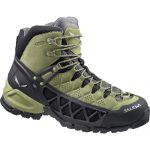 Salewa Alp Flow GTX MID - According to one Denali camper, “(he) can’t say enough about the Salewa Alp Flow Mid GORE-TEX SURROUND® Boots. And yes, let me be the first to admit that I’m singing their praises on the GORE-TEX brand official blog—but it’s true! I got them about a month before we left for Alaska, and went through the normal protocol for breaking in new hiking boots. I wore them around the house, then on short walks, and finally on a few longer hikes into the Superstition Mountains. At the end of the day, they’re so comfortable that I didn’t need to break them in at all.” Read more about the gear he recommends for hiking and backpacking in Alaska here. Hiking Boots For Women:
Salewa Alp Flow GTX MID - According to one Denali camper, “(he) can’t say enough about the Salewa Alp Flow Mid GORE-TEX SURROUND® Boots. And yes, let me be the first to admit that I’m singing their praises on the GORE-TEX brand official blog—but it’s true! I got them about a month before we left for Alaska, and went through the normal protocol for breaking in new hiking boots. I wore them around the house, then on short walks, and finally on a few longer hikes into the Superstition Mountains. At the end of the day, they’re so comfortable that I didn’t need to break them in at all.” Read more about the gear he recommends for hiking and backpacking in Alaska here. Hiking Boots For Women: 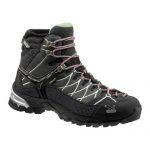 Salewa Alp Flow Mid GORE-TEX SURROUND® Boot - “I have the Salewa Alp Flow Mid and LOVE them!! A wide toe box and great heel grip! Extremely comfortable even when side hilling several hours, on consecutive days on 100 percent slopes.” - Monica McKenny, GORE™ Mountain Tech.
Salewa Alp Flow Mid GORE-TEX SURROUND® Boot - “I have the Salewa Alp Flow Mid and LOVE them!! A wide toe box and great heel grip! Extremely comfortable even when side hilling several hours, on consecutive days on 100 percent slopes.” - Monica McKenny, GORE™ Mountain Tech. 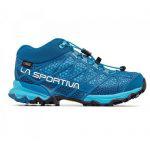 La Sportiva Synthesis GORE-TEX SURROUND® Boot - See this shoe in action in Nicole Eddy’s #TheBreatheProject video:
La Sportiva Synthesis GORE-TEX SURROUND® Boot - See this shoe in action in Nicole Eddy’s #TheBreatheProject video:
Trail running
What is trail running? Trail running is a sport which consists of running and hiking over trails.
Trail runners
Trailrunners support recreational to endurance athletes looking to run on trails in nature. Trailrunners are designed to support runners out in the wild, away from treadmills and paved sidewalks. Some of the best trails can only be traversed on foot and can lead you to the most pristine environments. Look for lightweight trail runners with a cushioned, stable ride and rugged traction. Trail runners for Men: 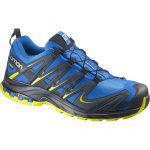 Salomon Men’s XA Pro 3D GTX running trail shoe - “I love these shoes and have been super impressed with how long they have lasted and how waterproof they have remained. I've also been impressed with their breathability and found that my feet don't sweat/overheat like they do in some other waterproof shoes.” - Jeremy Vallerand, GORE™ Mountain Tech.
Salomon Men’s XA Pro 3D GTX running trail shoe - “I love these shoes and have been super impressed with how long they have lasted and how waterproof they have remained. I've also been impressed with their breathability and found that my feet don't sweat/overheat like they do in some other waterproof shoes.” - Jeremy Vallerand, GORE™ Mountain Tech. 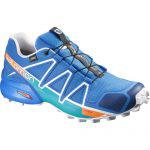 Salomon Speedcross 4 GTX® Shoe - Comes equipped with a quicklace system and a great shock-absorbing platform Trail runners for Women: Saucony TR10 GTX® Shoe - Helped Aly Nicklas and gang tackle a run across the Continental Divide in the dead of a Colorado winter. Go to top
Salomon Speedcross 4 GTX® Shoe - Comes equipped with a quicklace system and a great shock-absorbing platform Trail runners for Women: Saucony TR10 GTX® Shoe - Helped Aly Nicklas and gang tackle a run across the Continental Divide in the dead of a Colorado winter. Go to top
Backpacking
What is backpacking? Backpacking is the outdoor recreation of carrying gear on one's back, while hiking for more than a day. It is often, but not always, an extended journey and usually involves camping. While pack loads and weight will vary by the duration and intended mileage of any trip, backpacking tends to require gear that’s relatively “beefed up” in comparison to that of a generic day hike.
Backpacking boots
Good backpacking boots are designed to support your body through long and often tough terrain. Backpacking boots are built tough to keep up with the backpackers for their adventures. Look for hiking boots that absorb impact, stabilize the foot, and promote a correct stride. Men’s product recommendation 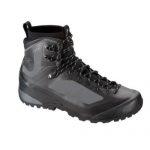 Arc'teryx Bora Mid GTX® Boot - “Great shoe for wet terrain. Have also used it for snowshoeing where my feet were kept dry and warm. The snug gasket on top keeps dirt, rocks and other stuff out of your shoes.” - Mike Offerman, GORE™ Mountain Tech. Women’s product recommendation
Arc'teryx Bora Mid GTX® Boot - “Great shoe for wet terrain. Have also used it for snowshoeing where my feet were kept dry and warm. The snug gasket on top keeps dirt, rocks and other stuff out of your shoes.” - Mike Offerman, GORE™ Mountain Tech. Women’s product recommendation 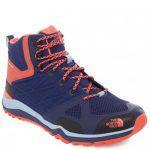 The North Face Ultra Fastpack Mid GTX® - Designed with CRADLE™ technology empowers proper stride. Go to top
The North Face Ultra Fastpack Mid GTX® - Designed with CRADLE™ technology empowers proper stride. Go to top
Mountaineering
What is mountaineering? Mountaineering is the sport of mountain climbing and includes ski mountaineering. Hiking in the mountains can also be a simple form of mountaineering when it involves scrambling, or short stretches of the more basic grades of rock climbing, as well as crossing glaciers.
Mountaineering boots
Mountaineering boots need to be durably waterproof and highly breathable to give you maximum protection and comfort, no matter how long and demanding the trek ahead may be. Look for mountaineering boots designed to move fast over any technical alpine terrain you want to tackle. Some boots offer an integrated gaiter to give extra protection and durability. Men product recommendations: 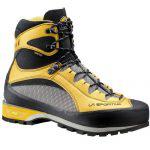 La Sportiva Trango S EVO GTX® Boot - “The rain and slush were trying but these boots were incredible – not only did they keep water out, but they let my sweaty feet breathe, too.” See what else Forest Woodward had to say about the boots he wore on his adventure through New Zealand.
La Sportiva Trango S EVO GTX® Boot - “The rain and slush were trying but these boots were incredible – not only did they keep water out, but they let my sweaty feet breathe, too.” See what else Forest Woodward had to say about the boots he wore on his adventure through New Zealand. 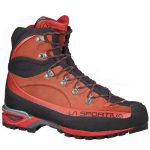 La Sportiva Trango Alp EVO GTX® Boot - “I chose La Sportiva’s Trango Alp Evo GTX® Boots, made from GORE-TEX Performance Comfort footwear membrane, to keep my feet dry as we trudged through the snowy backcountry. The Trango is a mountaineering boot I’ve been using for several years, whether for alpine climbing, glacier travel or backcountry trips.” - Outdoor Photographer Scott Kranz in his Shoulder Season and Sunrise: Baker Backcountry post. Women Product Recommendation
La Sportiva Trango Alp EVO GTX® Boot - “I chose La Sportiva’s Trango Alp Evo GTX® Boots, made from GORE-TEX Performance Comfort footwear membrane, to keep my feet dry as we trudged through the snowy backcountry. The Trango is a mountaineering boot I’ve been using for several years, whether for alpine climbing, glacier travel or backcountry trips.” - Outdoor Photographer Scott Kranz in his Shoulder Season and Sunrise: Baker Backcountry post. Women Product Recommendation 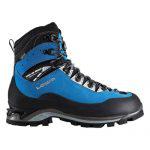 Lowa Cevedale Pro® - Combines timeless aesthetics with modern product technology. Go to top
Lowa Cevedale Pro® - Combines timeless aesthetics with modern product technology. Go to top
Hiking boot components and materials
Hiking boots are only as good as the materials they’re made out of. Depending on your adventure, you may want to search out specific materials in your hiking boots. Below are the different components and materials to keep in mind when researching new boots and shoes.
Uppers
Appropriately named, uppers are the part of the boot intended to support and keep your foot nice and snug. This part of the shoe helps protect the upper surface of your foot. Uppers can be made with a number of materials, including leather, plastics, and fabrics. Look for uppers that are waterproof and breathable.
- Full-grain: This shiny and smooth leather makes an extremely durable and abrasion-resistant hiking boot upper. This type of upper has great waterproofness and is built for extended backpacking trips with rugged terrain.
- Split grain: In combination with nylon or nylon mesh, split-grain leather is lightweight and breathable compared to other leather uppers. Because the fibers are looser than the full-grain leather, the split grain provides a softer feel. This material is often less waterproof and more susceptible to abrasion, though it can be oil, waxed, and buffed to improve its appearance and water resistance.
- Nubuck: This type of full-grain leather has been sanded or buffed to resemble suede, void of any imperfections in the hide. Nubuck is fairly flexible compared to other hiking boot uppers. Waterproof agents can be used on Nubuck, but they may affect the appearance of the leather.
- Vegan: If you’re looking for a material that resembles the water resistance and durability of leather but without using animal products or byproducts, you’re in luck. They do exist; look for hiking boots that offer synthetic leathers.
Midsoles
The midsole is the component that often determines the stiffness of your boot, provides cushioning, and buffers your feet from shock.
- EVA: Also known as ethylene-vinyl acetate, EVA is used to craft light and cushy hiking boots midsoles. The synthetic foam provides a good shock absorption. This type of midsole is often the cheaper option compared to other midsoles.Internal Support
- Polyurethane: This foam is flexible for use in boots or shoes that are soft and light, wear well, and resist slip. Polyurethane is resilient and doesn’t have a tendency to flatten or compress over time.
- Shank: This is the piece of material (steel, wood, fiber or leather) that is inserted between the outsole and midsole for added stiffness. It can help distribute weight for load-bearing. Often, lightweight trail shoes don’t include a shank.
- Plate: Plates are thin inserts often found between the midsole and outsole, though sometimes below the shank if it’s there, designed to give additional support/protection from rocks and roots.
Outsoles
- Lug pattern: These are the bumps on the bottom of your boot (aka the outsole). The lug patterns will vary depending on the boot and will provide varying degrees of traction. For backpacking and mountaineering, look for lugs that are deeper and thicker as these will help improve grip.
- Heel brake: This is the heel section of the boot that is built into some outsoles, distinct from the forefoot and arch. Heel brakes help to improve traction and prevent slippage out on trails.
Crampons
Crampons will be an additional purchase, but it’s good to keep them in mind if you plan to use your boots for winter hiking or mountaineering. Look to find boots that are compatible with crampons before purchasing. Already have crampons? Here’s how to care for them. Go to top
Hiking boot fit
An ill-fitted hiking boot will likely make for a short-lived adventure. Or at least an uncomfortable one. The first thing to keep in mind when searching for new hiking boots is to try them on at the end of the day (when your feet have had time to swell) and try them with the hiking socks you plan to wear. But the key takeaway: Always try them on before purchasing.
- General fitting: Hiking boots should fit snug, not tight, but snug. You should have room to wiggle your toes and generally they should feel comfortable. Sure you may need to break them in a little, but if your feet are screaming no, try a different pair.
- Men: Color selection and design will vary for men’s products versus women’s.
- Women: Specifications and shoe designs will vary for women’s boots compared to men’s.
- Children: Generally speaking, children’s feet are still changing shape and size into their early teens. Make sure you assess your child’s boots before any outings to ensure they are still comfortable.
- Wide feet: Many boots are available in different widths around the toe box. Consider visiting a brick and mortar store to have an employee properly assess your ideal fit.
- Flat feet: It’s important your boot compliments the natural arch of your foot. Search for a boot that best matches your arch or consider additional insoles for maximum comfort.
Read more about hiking boot fit here. Go to top
Post-purchase tips
How to break in hiking boots
As much as we’d like to have shoes or boots that fit perfectly after purchase, it’s rarely the case. You’ll need to break in your hiking boots prior to any adventures. Hopefully, your boots will only require a light breaking in. Either way, the following four steps will help you to break in your hiking boots so they’re ready for the trail.
- Step 1: Plan ahead - Don’t start breaking in your boots the day before your hiking trip, give yourself a few weeks prior to start the process.
- Step 2: Indoors only - There’s a difference between breaking in and owning a pair of shoes that just don’t fit. Wearing them indoors give you a chance to use them lightly to get a feel for the boot.
- Step 3: An introduction to the outdoors - If your hiking boots passed the indoors test, take them for a spin outside. But again, don’t go too crazy, just take them on a walk around the neighborhood first.
- Step 4: Embrace the outside world - Once you’ve completed the first three steps, really take on the environment around you. Increase your walk time and go over hills and through grass and gravel: give them a real test. This the chance to also test your new boots while wearing your full pack.
Read more about breaking in hiking boots here. Go to top
Hiking boot care and cleaning
Depending on the intensity of your hiking regimen, a little elbow grease with tap water and a wrag may no the trick for maintaining your boots. If you find that you’re putting on major miles through harsh terrain and crossing water or snow, you’ll want to give your hiking boots some extra love and care. It’s important to note that different membranes, uppers, and outer materials may warrant different approaches. Leather, for instance, may call for a polish whereas synthetics may only demand lukewarm water. When in doubt, refer to the labels inside your boots or within the box for best practices by make and model. For more information and some tricks of the trade, check out this video on How to Wash and Dry GORE-TEX Footwear:
More on those practices right on our How to Clean Hiking Boots resource. Go to top
Hiking boot socks
Once you’ve dialed in your ideal hiking boot size and model, make sure you extend the same careful consideration to your socks. Sweaty feet can lead to blisters, athlete’s foot, and calluses, so choosing a material that wicks away that sweat is of the utmost importance. We have a great post full of the nitty gritty details on how to choose the best hiking socks that illustrates the different sock materials, benefits and more. Go to top
Where to buy hiking boots
Hopefully by now the choice is crystal clear. Hiking boots and shoes with GORE-TEX product technology enable you to tackle nearly any terrain while fending off weather and poor trail conditions. Waterproof and breathable hiking boots should be the first step toward any hiking trail. To see our assortment of men’s and women’s hiking boots and hiking shoes, head to the GORE-TEX product catalog. It’s an easy place to explore brands, activities, and more. You can order directly off of any product page or visit an outdoor retailer like REI, Backcountry or Moosejaw. And don’t forget to ask your local vendors for hiking gear with GORE-TEX product technology. Go to top

